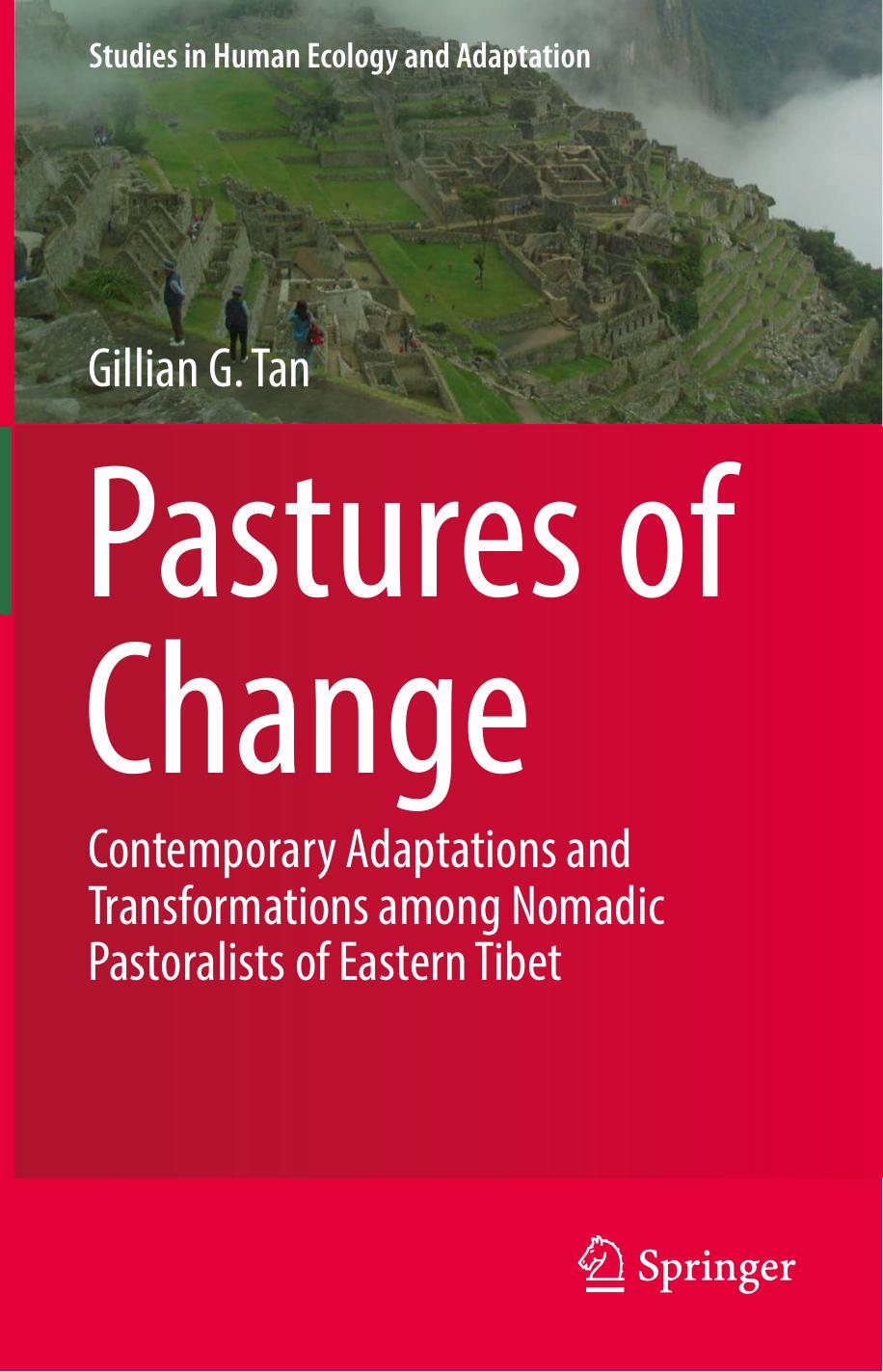Pastures of Change by Gillian G. Tan

Author:Gillian G. Tan
Language: eng
Format: epub, pdf
Publisher: Springer International Publishing, Cham
Historical Relationships with Rulers and Kings
Anthropological literature on the social organization of pastoralists has been strongly influenced by the work of Evans-Pritchard (1940) on the Nuer , whose social structure was presented as an acephalous kinship state that was egalitarian , deeply democratic, and easily roused to violence (Evans-Pritchard 1940: 181). The Nuer were pastoralists of a mixed economy, making use of millet agriculture, the gathering of wild fruit and seeds, and fishing and hunting in addition to the husbandry of cattle (Evans-Pritchard 1940: 69). In this regard, they practiced transhumance , as described by Jones (2005). Supplementary sustenance activities were, however, necessitated more by the fact that their herds could not supply them with sufficient nourishment because of the sparsity of the environment and abundance of insects that decreased yield than by any dissipation of pastoral focus. For the Nuer , pastoralism remained their primary form of sustenance and identification, and the role of cattle in their daily lives, especially as bride-wealth, was unsurpassed. Nuer livelihood and movement were dictated by seasonal cycles of flood and drought, which necessitated movements between higher and dry land, and lower and more fertile land. Nuer time, as a result, was structured partly by ecological constraints, namely the cyclical nature of the year and its seasons as well as presence and absence of water.
Notwithstanding these environmental factors, another structure of time was the chronological time of events, organized according to rituals, such as those connected to the age-set system in which boys of a certain age-range spent time together in rites of passage that marked their transition into manhood. Such events cut across and offset the primary structure of social and political organization among the Nuer, which was composed of kinship segments focused on the paternal line. Primary, secondary, and tertiary segments, also referred to as minimal, minor, and major lineages, ensured that solidarity radiated outward, with the strongest bond focused on one’s father and his immediate household , then one’s grandfather and the households connected with him, and then further on to one’s great-grandfather and those households associated with him. The tribe was the largest social unit, reckoning to 10, even 12 generations back. Proximity and distance in terms of kinship and social structure also influenced spatial distance as households of closer kin lived in closer proximity, while those of more distant relationship lived further apart. The main influence of the nested segmentary structure of the Nuer was on the relative identity of a Nuer person based on their opposite other. This segmentary opposition dictated processes of fragmentation and solidarity as conflicts and feuds occurred. The egalitarian structure of Nuer society was also expressed through the lack of a single figure of authority in the way that kings exercised authority over death and the ability to enforce punishment.
Critiques of Evans-Pritchard’s static presentation of the Nuer and over-emphasis on their egalitarianism have been well rehearsed, particularly regarding the assumption that segmentary opposition always produces egalitarianism (Aulino et al. 2013). Kapferer’s (2011) work on
Download
This site does not store any files on its server. We only index and link to content provided by other sites. Please contact the content providers to delete copyright contents if any and email us, we'll remove relevant links or contents immediately.
International Integration of the Brazilian Economy by Elias C. Grivoyannis(85329)
The Radium Girls by Kate Moore(11858)
Turbulence by E. J. Noyes(7888)
Nudge - Improving Decisions about Health, Wealth, and Happiness by Thaler Sunstein(7451)
The Black Swan by Nassim Nicholas Taleb(6938)
Rich Dad Poor Dad by Robert T. Kiyosaki(6307)
Pioneering Portfolio Management by David F. Swensen(6164)
Man-made Catastrophes and Risk Information Concealment by Dmitry Chernov & Didier Sornette(5870)
Zero to One by Peter Thiel(5629)
Secrecy World by Jake Bernstein(4588)
Millionaire: The Philanderer, Gambler, and Duelist Who Invented Modern Finance by Janet Gleeson(4284)
Skin in the Game by Nassim Nicholas Taleb(4118)
The Age of Surveillance Capitalism by Shoshana Zuboff(4111)
The Money Culture by Michael Lewis(4016)
Bullshit Jobs by David Graeber(3982)
Skin in the Game: Hidden Asymmetries in Daily Life by Nassim Nicholas Taleb(3863)
The Dhandho Investor by Mohnish Pabrai(3629)
The Wisdom of Finance by Mihir Desai(3599)
Blockchain Basics by Daniel Drescher(3423)
